Skulls
Have you ever found a skull in the woods or weeds? Were you able to identify which animal it belonged to?
Here are a few skulls for you to study. Some of these skulls belong to predators, animals that hunt and kill to eat. Predator skulls have eye sockets that allow them to look forward toward their prey. What other observations can you make about these skulls that help them as predators? Which of these animals eat only plants? What about their teeth make eating plants easier? Most plant-eaters are prey animals. What adaptations do they have to protect themselves from hungry predators?
Match the description of the animal (1-6) with its picture (A-F) and its skull (I-VI). You will end up with an answer such as 1, F, IV. When you’re done, check your answers.
- This mammal is found
throughout western Texas
and the Brush Country
of South Texas. It has
daggerlike tusks and crushing
molars that enable it
to eat various types of
cactus (especially prickly
pear), mesquite beans,
and other vegetation.
As many as thirty of these
animals may roam together
in one herd. Although
it usually avoids man,
it has been known to slash
hunters or hunting dogs
with its long, sharp tusks.
It makes a loud popping
sound with its teeth as
a warning signal and squeals
if startled. Adults weigh
between thirty and fifty
pounds.
- This nocturnal mammal
spends the daylight hours
sleeping in its den in
a hollow tree or log.
It is quite fond of water
and does most of its feeding
in or by the water’s
edge. Although classed
as a carnivore, this animal
is not a specialized feeder.
It eats fruits, nuts and
corn as well as fish,
birds, snakes, insects
and crayfish. As a result,
it has flat-crowned molar
teeth that are adapted
for crushing instead of
the shearing or cutting
molars of the dog and
cat families. Adults weigh
from ten to thirty pounds.
- This imported mammal
is a member of the rodent
family and has large gnawing
incisors characteristic
of this group. It prefers
a semiaquatic habitat
and can be found in swamps
and marshes or along the
shores of lakes and rivers.
It is equally at home
in either fresh or salt
water. Aquatic and semiaquatic
vegetation is its staple
food, but a nearby garden
with cabbage, carrots,
and sweet potatoes also
may be raided by this
South American native.
Adults normally weigh
eighteen to twenty-five
pounds.
- This mammal is a very
active digger and will
have several unoccupied
dens or burrows that are
used for escape shelters.
Although most of its body
is covered with a shell-like
armor to help protect
it from predators, its
sparse hair makes it susceptible
to cold weather. In fact,
long periods of freezing
weather can kill a whole
population. Its long snout,
well suited for probing
the ground for insects,
is equipped with twenty-eight
to thirty-two peglike
teeth. Adult males weigh
twelve to seventeen pounds
and females eight to thirteen
pounds.
- This predatory bird
has a huge appetite. It
can swallow whole rats,
mice, and small birds.
Larger animals are torn
into pieces by its sharp,
hooklike beak. Bones,
feathers, and fur are
all eaten. The parts that
cannot be digested are
compressed into a pellet
about one inch in diameter
and two inches long. The
bird then regurgitates
the pellet. This bird
is well adapted to night
hunting, and its flight
is almost noiseless. It
has extremely large eyes
that can take advantage
of the dim light of night.
- This large, long-necked
wading bird often is mistaken
for a crane. It uses its
spearlike bill to catch
food and defend itself
against enemies. In addition
to fish, this four-foot
bird with its six-foot
wingspan eats snakes,
mice, frogs, eels, salamanders,
insects, and an occasional
marsh bird. When in flight,
it folds its long neck
and rests its head on
its shoulders. Marshes,
swamps, rice fields, rivers,
and shorelines are choice
habitat.
- This medium-sized wading bird prefers the shallow water of marshy areas, wet fields, and tidal flats for feeding areas. Crayfish, fiddler crabs, snakes, and insects fall victims to its long, curved bill. When in flight, this bird keeps its neck outstreatched and alternates between flapping and gliding.
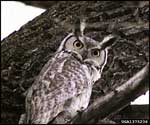
A
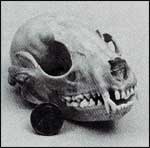
I
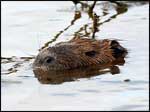
B
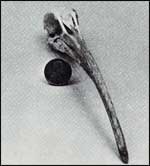
II
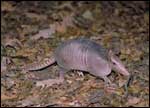
C
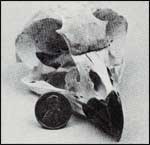
III
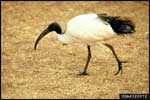
D
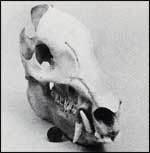
IV
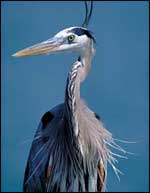
E
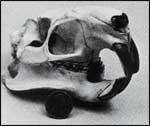
V
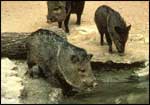
F
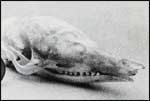
VI
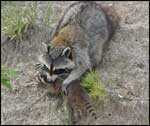
G
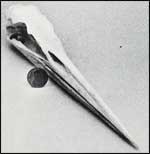
VII
Ilo
Hiller
1983 Skulls.
Young
Naturalist. The
Louise Lindsey Merrick
Texas Environment Series,
No. 6, pp. 36-37. Texas
A&M University Press,
College Station.